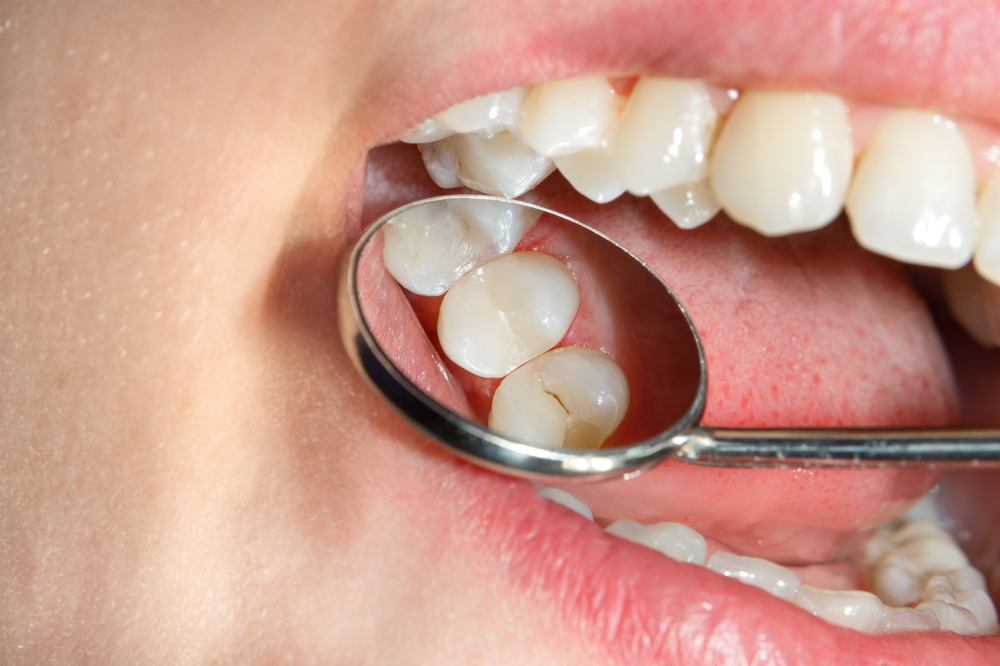Non-Surgical Root Canal Treatment in Henderson, NV
Please note we may not offer this service at our office. Contact (702) 896-8933 to learn more.
A Minimally Invasive Way to Remove Infected Dental Tissue
Root canal therapy is one of the most common treatments for tooth decay, but involves surgery, which can be scary for some patients. However, non-surgical root canal treatment is a painless and effective alternative to traditional root canal treatment.
To learn more about this non-surgical alternative, keep reading our Henderson, NV dentist’s guide to get a better understanding of how the treatment works. If you have any questions or concerns, don’t hesitate to reach out to our office by calling (702) 896-8933.
What Is Non-Surgical Root Canal Treatment?
Non-surgical root canal treatment is a minimally invasive procedure that treats tooth decay and saves the natural tooth from extraction. Unlike conventional root canal therapy, which involves surgery, non-surgical root canal treatment is performed without making any incisions or cuts. Instead, your dentist uses special tools to remove the infected pulp from the tooth, clean the root canals, and fill them with a special material.
Benefits of Non-Surgical Root Canal Treatment
Non-surgical root canals offer several benefits over surgical root canal therapy, including:
- Painless Procedure: Non-surgical root canal therapy isn’t painful and typically requires only a local anesthetic. Patients won’t feel pain during the procedure and will experience little to no discomfort afterward.
- Quick Recovery: Because it’s a minimally invasive procedure, patients can usually resume normal activities immediately after treatment.
- Effective Treatment: Non-surgical root canal treatment is just as effective as surgical root canal therapy at treating tooth decay. It has a high success rate and can save a tooth from being extracted.
Candidacy for Non-Surgical Root Canal Treatment
Non-surgical root canal treatment is typically recommended for patients whose tooth decay is not too advanced.
The following factors may indicate your candidacy for this non-invasive treatment:
- Severe Toothache: If a patient is experiencing a severe toothache, particularly when chewing or applying pressure, this may indicate that the tooth’s pulp is inflamed or infected.
- Sensitivity to Hot or Cold: Prolonged sensitivity to hot or cold temperatures, even after the stimulus has been removed, can also be a sign that the pulp may be damaged.
- Discoloration: Sometimes, a discolored or darkened tooth can indicate a dying pulp.
- Swollen, Tender Gums: Swelling or tenderness in the gums around a tooth could indicate an infection that may require root canal treatment.
- Pimple on the Gums: A persistent or recurring pimple on the gums, also known as a dental abscess, can be a sign of an infection that has spread from the tooth pulp to the surrounding gum tissues.
 The Non-Surgical Root Canal Treatment Procedure
The Non-Surgical Root Canal Treatment Procedure
The non-surgical root canal procedure typically takes about one hour in a dental office. Here’s what to expect during the procedure:
- Numbing the Area: The dentist will numb the area around the affected tooth using a local anesthetic.
- Accessing the Pulp: They’ll use a special tool (usually a dental drill) to make a small hole in the top of the tooth to access the infected pulp.
- Removing the Infected Pulp: Your dentist will use small, flexible files to remove the infected pulp from the tooth and root canals.
- Cleaning the Root Canals: Once the infected pulp is removed, the dentist will clean the root canals using special tools. The root canals will be irrigated with a disinfectant solution to eliminate any remaining bacteria.
- Filling the Root Canals: Then, your dentist will fill the root canals with a special material, gutta-percha, to prevent further infection.
- Sealing the Tooth: Finally, the dentist will seal the tooth with a filling or crown to prevent bacteria from entering the tooth.
Non-Surgical Root Canal Treatment Aftercare
After treatment, patients can usually resume their normal activities immediately. However, it’s crucial to follow the dentist’s instructions for the care and maintenance of the treated tooth, which may include:
- Avoiding hard or crunchy foods for a few days after treatment
- Taking pain medication as prescribed by the dentist
- Practicing good oral hygiene, including brushing and flossing regularly
- Schedule a follow-up appointment with your dentist
Frequently Asked Questions
Not at all. Non-surgical root canal treatment is typically not painful as it only requires a local anesthetic. Patients may feel slight discomfort or pressure during the procedure.
Non-surgical root canal treatment usually takes about an hour to complete. The duration of the procedure may vary depending on the case’s complexity and the number of canals that need treatment.
Yes. Most dental insurance plans cover non-surgical root canal treatment. However, it’s best to confirm coverage with your insurance provider. Insurance coverage may vary depending on the specifics of your plan and the severity of the case.
Treat Infected Root Canals Without Surgery
A nonsurgical dental procedure is a viable alternative to traditional root canal treatment. It offers several benefits, including a quicker recovery time, less downtime, and a higher success rate.
Call our Henderson, NV, office at (702) 896-8933 to schedule your consultation. We also welcome patients from Boulder City, Paradise, and Las Vegas, NV. With proper aftercare, you can enjoy a healthy, pain-free smile for years to come.


 The Non-Surgical Root Canal Treatment Procedure
The Non-Surgical Root Canal Treatment Procedure